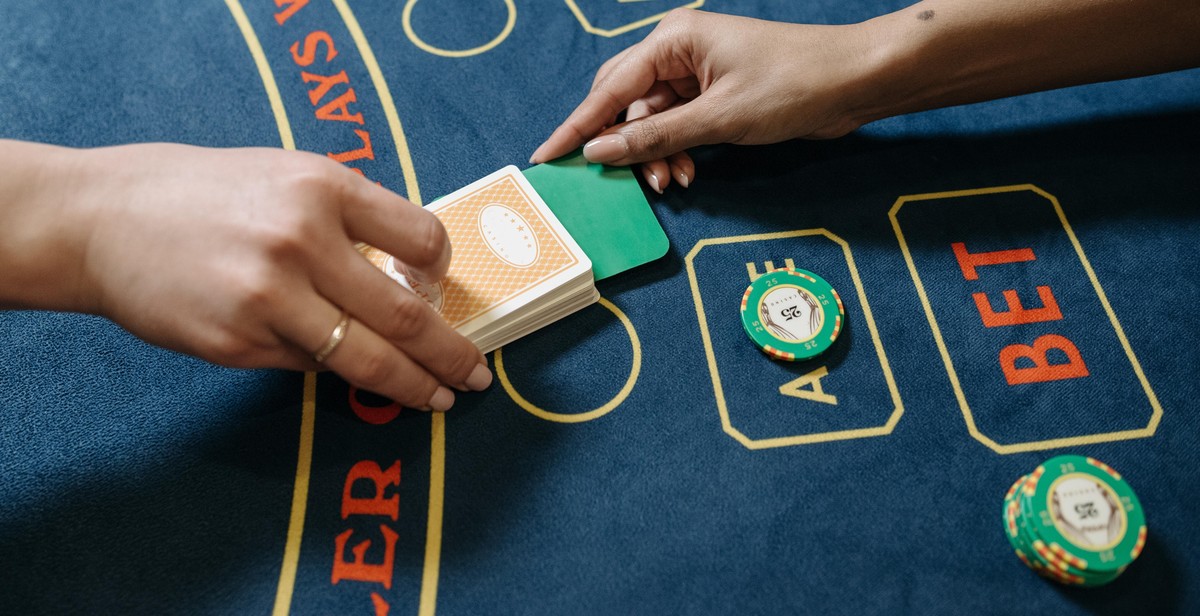Introduction: How to Improve Your Poker Reading Abilities
Poker is a game of skill, strategy, and psychology. While mastering the rules and understanding the odds are important, the ability to read your opponents and anticipate their moves can give you a significant advantage at the table. This is where poker reading abilities come into play.
Reading your opponents means being able to interpret their actions, expressions, and body language to gain insight into their hand strength and intentions. It can help you make better decisions, avoid costly mistakes, and ultimately win more games.
Why Poker Reading Abilities Are Important
Having strong poker reading abilities can give you several advantages in the game. Firstly, it can help you identify weaker players and exploit their mistakes. Secondly, it can help you avoid getting bluffed or trapped by more experienced players. Finally, it can help you make better decisions and increase your chances of winning.
However, improving your poker reading abilities is not an easy task. It requires practice, focus, and patience. In this article, we will discuss some tips and techniques that can help you improve your poker reading abilities and take your game to the next level.
Table of Contents
- Tip #1: Pay Attention to Your Opponents
- Tip #2: Look for Patterns and Tendencies
- Tip #3: Read Body Language and Facial Expressions
- Tip #4: Consider the Context and Situation
- Tip #5: Practice and Observe

Understanding Body Language
Body language is a crucial aspect of poker playing and reading abilities. It involves observing and interpreting nonverbal cues that players unconsciously exhibit during the game. As a player, you need to understand the importance of observing body language, common body language tells, reading your opponents’ facial expressions, and how to control your own body language.
The Importance of Observing Body Language
Observing body language is an essential aspect of poker playing as it helps you to understand your opponents better. A player’s body language can reveal their level of confidence, nervousness, and bluffing tendencies. By observing and interpreting their nonverbal cues, you can gain valuable insights into their thought process and predict their moves.
Common Body Language Tells
Some common body language tells that players exhibit during a game include fidgeting, avoiding eye contact, sudden stillness, and nervousness. Players tend to fidget when they are anxious or uncomfortable, avoiding eye contact when they are lying or hiding something, and suddenly becoming still when they have a strong hand. By learning to recognize these common tells, you can predict your opponents’ next move and make better decisions.
Reading Your Opponents’ Facial Expressions
Reading your opponents’ facial expressions is another crucial aspect of poker playing. The face is an excellent indicator of a player’s emotional state, and by observing their facial expressions, you can determine whether they are happy, sad, nervous, or confident. A player’s facial expressions can also reveal their level of bluffing, and by learning to recognize their tells, you can predict their next move.
How to Control Your Own Body Language
Controlling your body language is equally important in poker playing. You need to avoid giving away your emotions and intentions through your nonverbal cues. Some ways to control your body language include maintaining eye contact, avoiding fidgeting, and keeping a straight face. By controlling your body language, you can avoid giving any tells to your opponents and maintain a poker face.
| Tips | Description |
|---|---|
| Observe your opponents | Pay attention to your opponents’ nonverbal cues and learn to recognize their tells. |
| Control your breathing | Control your breathing to avoid giving away your emotions. |
| Practice | Practice your body language control techniques to master the art of poker playing. |
By understanding body language, you can improve your poker reading abilities and make better decisions during the game. Observing body language, recognizing common tells, reading your opponents’ facial expressions, and controlling your own body language are essential skills for any serious poker player.

Analyzing Bet Sizing in Poker
Bet sizing is an essential aspect of poker strategy that every player should master. It is one of the most crucial tools for reading your opponents and determining their hand strength. Understanding the different bet sizes and what they mean can help you make more informed decisions at the table and improve your overall game.
Why Bet Sizing is Important
The size of a bet can reveal a lot about a player’s hand and their intentions. A small bet may indicate weakness, while a large bet may indicate strength. By analyzing your opponent’s bet sizing, you can get a better sense of their hand range and make more accurate reads.
Moreover, your own bet sizing can also affect how your opponents perceive your hand. A well-timed bluff with a large bet can make it seem like you have a strong hand, while a small bet may not be taken seriously.
Different Bet Sizes and What They Mean
There are several different bet sizes that you will encounter in poker, each with its own meaning:
- Minimum bet: The smallest bet allowed at the table. It is often used to keep players in the hand or to test the waters.
- Standard bet: A bet that is roughly equal to the size of the pot. It is a common bet size that can be used for both value bets and bluffs.
- Overbet: A bet that is larger than the size of the pot. It is often used to put maximum pressure on opponents and force them to fold.
- All-in: Betting all of your remaining chips. It is a high-risk bet that is usually made with a strong hand or as a bluff.
How to Use Bet Sizing to Your Advantage
One way to use bet sizing to your advantage is to vary your bet sizes based on the strength of your hand and the board texture. For example, if you have a strong hand on a dry board, you can make a smaller bet to induce your opponents to call. On the other hand, if the board is wet and there are many possible draws, a larger bet may be more effective in protecting your hand.
Another way to use bet sizing to your advantage is to pay attention to your opponents’ bet sizes and adjust your play accordingly. If an opponent consistently makes small bets, they may be playing a tight and cautious game, and you can take advantage of this by making larger bets to force them out of the hand. Conversely, if an opponent consistently overbets, they may be bluffing or overvaluing their hand, and you can exploit this by calling their bets more often.
| Bet Size | Hand Strength | Purpose |
|---|---|---|
| Minimum bet | Weak to medium | Keep players in the hand or test the waters |
| Standard bet | Medium to strong | Value bet or bluff |
| Overbet | Strong | Put maximum pressure on opponents |
| All-in | Very strong or bluff | Commit all your chips to the pot |

Paying Attention to Timing
Timing is a crucial aspect of poker reading abilities. It can help you understand your opponent’s hand and make better decisions. A player’s actions and the time taken to make them can reveal a lot about their hand and their intentions. Therefore, paying attention to timing is an essential skill to develop if you want to improve your poker game.
Why Timing is Important
Timing is important in poker because it can help you determine the strength of your opponent’s hand. For instance, if a player takes a long time to act, it may indicate that they are unsure of their hand or are trying to bluff. On the other hand, if a player acts quickly, it may suggest that they have a strong hand and are confident in their decision.
Different Timing Tells and What They Mean
There are various timing tells to look out for in poker. Some of the most common ones include:
- Slow play: When a player takes a long time to act, it may indicate that they have a strong hand and are trying to trap you.
- Quick play: When a player acts quickly, it may suggest that they have a weak hand and are trying to bluff.
- Pause: When a player pauses before making a decision, it may indicate that they are considering their options and have a marginal hand.
- Stutter step: When a player hesitates before making a bet or raise, it may suggest that they are unsure of their hand.
How to Use Timing to Your Advantage
By paying attention to your opponent’s timing tells, you can use them to your advantage. For instance, if a player takes a long time to act, you can use this information to make a more informed decision. You may decide to fold if you suspect that they have a strong hand or to raise if you believe that they are bluffing.
On the other hand, if a player acts quickly, you may use this information to your advantage by calling their bluff or making a raise to put pressure on them. By understanding and using timing tells, you can improve your poker reading abilities and increase your chances of winning.
| Timing Tell | What it Means |
|---|---|
| Slow play | Player has a strong hand and is trying to trap you |
| Quick play | Player has a weak hand and is trying to bluff |
| Pause | Player is considering their options and has a marginal hand |
| Stutter step | Player is unsure of their hand |

Analyzing Betting Patterns
When it comes to playing poker, analyzing betting patterns is a crucial skill that every player should possess. Betting patterns refer to the way a player bets during a poker game, and they can reveal a lot about their hand and their overall strategy. In this section, we’ll explore why betting patterns are important, the different betting patterns and what they mean, and how you can use betting patterns to your advantage.
Why Betting Patterns are Important
By analyzing a player’s betting patterns, you can gain valuable insights into their playing style, their hand strength, and their overall strategy. This information can help you make more informed decisions about your own play, such as whether to call, raise, or fold. Additionally, understanding betting patterns can also help you identify potential bluffs and avoid making costly mistakes.
Different Betting Patterns and What They Mean
There are several different betting patterns that you may encounter during a poker game:
- Small bets: A player who consistently makes small bets may be trying to keep the pot small and avoid losing too much money.
- Large bets: Conversely, a player who consistently makes large bets may be trying to intimidate their opponents and force them to fold.
- Slow play: Slow playing involves making small bets or checking with a strong hand, in an effort to lure other players into the pot and maximize winnings.
- Quick bets: A player who quickly bets or raises may be trying to appear confident and strong, or may be trying to force their opponents to act quickly without thinking.
- Inconsistent bets: Inconsistent betting patterns can indicate that a player is unsure of their hand strength, or may be trying to throw their opponents off.
How to Use Betting Patterns to Your Advantage
One of the best ways to use betting patterns to your advantage is to observe your opponents closely and take note of their tendencies. Once you’ve identified a pattern, you can use it to make more informed decisions about your own play. For example, if you notice that a player consistently makes small bets when they have a weak hand, you may be more inclined to call their bets and try to win the pot. On the other hand, if you notice that a player always makes large bets when they have a strong hand, you may be more cautious and avoid getting involved in a big pot with them.
| Player | Betting Pattern | Hand |
|---|---|---|
| Player 1 | Small bets | Unknown |
| Player 2 | Quick bets | Unknown |
| Player 3 | Large bets | Strong hand |
| Player 4 | Inconsistent bets | Unknown |
As you can see from the example above, understanding betting patterns can help you make more informed decisions about your play. By analyzing your opponents’ betting patterns and adjusting your own play accordingly, you can improve your chances of winning at the poker table.

Conclusion
Improving your poker reading abilities is crucial if you want to become a successful player. By learning how to read your opponents’ body language, facial expressions, and betting patterns, you can gain valuable insights into their strategies and make better decisions at the table.
Tips for Improving Your Poker Reading Abilities
- Pay attention to your opponents’ body language and facial expressions.
- Observe their betting patterns and try to identify any patterns or tells.
- Practice playing different styles of poker to improve your overall game.
- Take notes on your opponents to help you remember their tendencies and patterns.
- Watch poker videos and read books to learn from the pros.
Remember, improving your poker reading abilities takes time and practice. Don’t be discouraged if you don’t see immediate results. Keep working at it and you’ll eventually start to see improvements in your game.
Final Thoughts
By improving your poker reading abilities, you can gain a significant advantage over your opponents at the table. With practice and patience, you can become a skilled and successful poker player.
| Related Articles: | 5 Tips for Improving Your Poker Strategy | The Importance of Bankroll Management in Poker |
